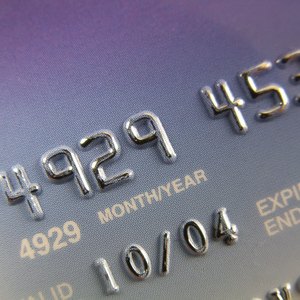
Whether or not you can stop payment on debit card or credit card purchases is often a matter of semantics. If you’ve received goods or services and the merchant has run your card, you can dispute the charge or debit, and your card issuer will investigate. During that time, the card issuer might have to pay the merchant and put a hold on your account equal to the transaction amount.
Reviewing how to attempt to stop payment on debit card or credit card purchases will help you take the right steps to protect your funds.
Read More: Bank Transfer Vs. Credit Card
What Is a Stop Payment?
A stop payment usually applies to a check or money order transaction. You ask your bank not to honor the check or money order when it’s presented. This phrase is also often used to describe a debit or credit card transaction dispute.
Credit card networks don’t want to upset the merchants who accept their cards by stopping payments any time a customer asks, so payments technically aren’t stopped – they might be frozen or delayed.
Example of a Dispute
Let’s say you order a pair of size 7 shoes and the retailer ships you a pair of size 6 shoes. You contact the retailer who won’t exchange the shoes. You can call your card company and open a dispute, but the retailer has most likely already been paid.
If the card issuer investigates and sides with you, it will remove the transaction from your card and return the amount that was added to your card, eliminating any interest you were charged. The merchant would then need to return the money it received from the card issuer.
Contact the Merchant
The first step in opening a dispute to get a charge or debit off your card is to contact the merchant. Get as much information as possible, and as much of it in writing as possible. During a dispute, you might be asked by your card issuer to provide support materials, such as a receipt, shipping document or emails between you and the merchant.
During this information-gathering process, the merchant might change its mind and refund your money or replace your item – the more disputes it has with customers, the more likely it is that card issuers will stop doing business with the merchant.
Contact the Card Issuer
Once you have unsuccessfully tried to settle your dispute with the merchant and have gathered as much evidence as possible, contact your card issuer. You can call the customer service number on the back of your card, log in to your online account or use the card issuer’s mobile app (if it has one). Follow the steps to dispute a charge. When you call the toll-free number, this will be one of the choices you will be given in order to get you to the correct agent.
Provide your card issuer with the information it requests. You’ll be asked for details such as the merchant’s name, date of the transaction and amount. You’ll then be asked to describe the situation and your reason for disputing the transaction. Once you’re done, you’ll get a confirmation e-mail and/or letter telling you the card issuer has opened an investigation.
This process will take up to 30 days, during which time the card issuer might or might not release your funds. When the card issuer has finished its investigation, it will notify you of its decision.
Don’t wait to contact your credit card company. Many mail-order and online purchases you make require the seller to offer 30-day returns. Other purchases might also be covered under the Fair Credit Billing Act. The longer you wait to dispute a charge (your card company might also have limits), the lower your chances of winning your dispute might be.
References
Writer Bio
Steve Milano has written more than 1,000 pieces of personal finance and frugal living articles for dozens of websites, including Motley Fool, Zacks, Bankrate, Quickbooks, SmartyCents, Knew Money, Don't Waste Your Money and Credit Card Ideas, as well as his own websites.

